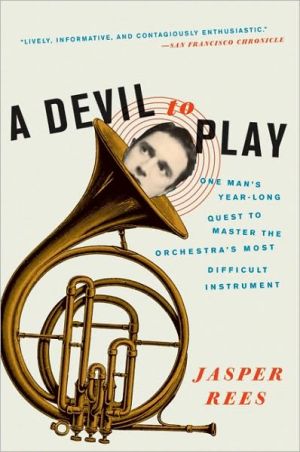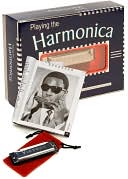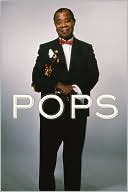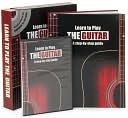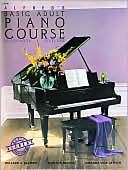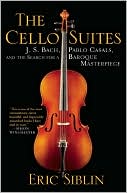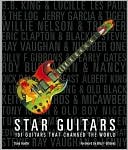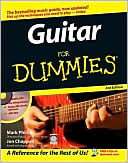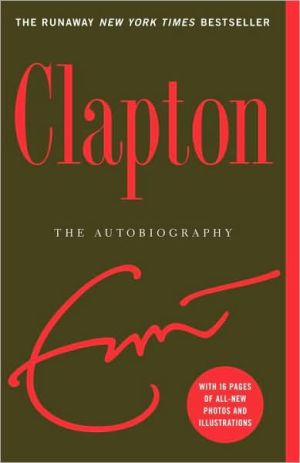A Devil to Play: One Man's Year-Long Quest to Master the Orchestra's Most Difficult Instrument
In the days before his fortieth birthday, London-based journalist Jasper Rees traded his pen for a French horn that had been gathering dust in the attic for more than twenty-two years and, on a lark, played it at the annual festival of the British Horn Society. Despite an embarrassingly poor performance, the experience inspired Rees to embark on a daunting, bizarre, and ultimately winning journey: to return to the festival in one year's time and play a Mozart concerto-solo-to a large paying...
Search in google:
In the days before his fortieth birthday, London-based journalist Jasper Rees puts down his pen and retrieves his French horn from the attic, where it has sat gathering dust for the last twenty-two years. He hasn t played since his teens -- when he showed a basic talent, but lacked commitment -- but he is ambushed by a desire to take up his old musical instrument. He finds the perfect place to do it: the annual festival of the British Horn Society. Despite his embarrassingly poor performance, a weekend spent with the instrument fires his desire to continue playing. He challenges himself to return in a year, but this time to stand onstage and play a Mozart concerto to a paying audience of hundreds. Alone. And so begins his daunting, bizarre, and ultimately winning journey. The French horn happens to be the instrument widely regarded as the most difficult to conquer as well as the most treacherous to play in public. And throughout the year, Jasper turns to experts for advice. He attends a weeklong Horn Camp in New Hampshire. He even tracks down celebrities such as Ewan McGregor who, like him, gave up the horn many years earlier. Everyone has the same bit of advice for him: don t do it. But he does. A Devil to Play is the story of a midlife crisis spent not on a Harley-Davidson but on 18 feet of wrapped brass tubing. It is also the story of man s first musical instrument, and its journery from the walls of Jericho to Sgt Pepper s Lonely Hearts Club Band, from the hunting fields of aristocratic France to the heart of Hollywood. It is the account of one man s mounting musical obsession, told with pitch-perfect wit and an undeniable charm. It is an endearing tale of perseverance and achievement, a true and ridiculous story of inspiration -- complete with emboldening horn music -- relayed masterfully, one side-splittingly off-key note at a time. Publishers Weekly Rees, a London journalist, decided to face his midlife crisis by picking up the French horn-an instrument he hadn't played since he was a teenager-and whip himself back into shape so he could play a Mozart concerto in front of an audience in just one year. Luckily, he had one of England's best horn players to give him lessons, but it was still an uphill battle-for starters, the concerto was composed in the key of E flat, but the horn was tuned to F, so Rees (like every performer before him) had to transpose the notes down a tone as he played along. Along the way, he recounts the instrument's colorful history, including a playful recreation of the first performance of Handel's Water Music(when the hunting horn first appeared alongside more widely acknowledged "serious" instruments), and chats with many of the world's leading performers, as well as Holly Hunter and Ewan McGregor who, like Rees, played the instrument in their youth. Rees's self-assigned quest turns into an amiable romp with quiet bits of inspiration. (Dec.)Copyright © Reed Business Information, a division of Reed Elsevier Inc. All rights reserved.
A Devil to Play\ One Man's Year-Long Quest to Master the Orchestra's Most Difficult Instrument \ Chapter One\ In the Beginning was the Horn\ \ When the horne bloweth: then let them come up in to the mounten.\ —Exodus 19:13, Tyndale Bible\ \ In the year before I took up the French horn again, an important finding was made about the universe. Scientists at the University of Ulm in Germany, analyzing patterns of hot and cold blobs observed by NASA's Wilkinson Microwave Anisotropy Probe, were able to confirm that the universe is finite. The same conclusion had recently been posited by scientists at Montana State University, who contended that space is shaped like a ball. The research of their rivals at Ulm proved that it isn't anything so banal as a sphere. According to their model, the universe narrows at one end to an infinitely distant vanishing point, while at the other it curves outward, though not forever. If a spaceship were to travel toward the expanded end, it would at some putative point hit a wall and be deflected back in the opposite direction.\ Narrow at one end, curving out into a wide flare at the other? Only one answer seems possible. The universe, far from being spherical, is conical. It exists in the shape of a horn.\ I grew up, at least at the weekends, beneath the South Downs in West Sussex. The oldest building in what you'd scarcely call a village goes back to 1680. No one really knows for sure, but our home is of roughly the same vintage. So if it was built in the 1680s, it belongs to the same decade as the births of Handel and Bach, who between them would give the horn itsfirst orchestral employment.\ The cottage was more burrow than house. Once you rose to anywhere near six foot, you had to duck in and out of the sitting room to avoid thudding your head on the door frame. You also had to watch out for a low beam slung across the middle of the room. We are mostly male in my family, mostly six foot or thereabouts. (I am five foot eleven and three-quarters.) We all stoop.\ The pockmarked bricks of the hearth were the oldest part of the house. Across the fireplace there was a shiny brass smoke screen in which you could pull faces and watch them wobble and distort back at you. Above, mounted on nails banged into the brick, was a collection of old hunting horns. There was a short round one and, on the other side, a short straight one. Then there was a longer straight one, the kind that often have pennants draped from them and are used to announce the arrival of a royal personage. Running across the top of the wall was the eye-catcher, a magnificent straight horn four feet in length. It had, so far as I could tell, no practical application unless you were planning to summon your two brothers to a medieval joust in the garden. But the centerpiece, the instrument that drew the eye, was a slender round horn of perhaps fifteen inches in diameter. Were you to unwrap its coils, it would be just as long as the magnificent straight horn. It had a small bell, and no valves or slides. But this, manifestly, was an ancestor of the instrument I took up on March 12, 1975.\ I hardly ever went near any of them. Occasionally there'd be visitors to whom, as part of a range of hosting duties, we would feel obliged to show off. In such an instance the horns came in handy. The ritual was always the same. We'd start with the smallest and work our way up to the magnificent straight horn. This would be the finale. And now, ladies and gentlemen. That was the idea, anyway, but it was more or less impossible to tease any form of note out of the two small horns, so mostly we just fought over the bigger horns. We were always genuinely surprised at how difficult it was to extract a presentable noise.\ But then these horns weren't designed to sound beautiful. In the preorchestral phase of its life, the horn's job was to talk to the animals, or the army, or the enemy. Unlike the lyre, the dulcimer, or the lute—at home we also had one of those—it wasn't allowed to bring its muddy boots through the front door. There was no music written for it. It just had to sound loud.\ On Saturdays in winter we had firsthand evidence of this. My parents were members of that section of the population that likes to chase small quadrupeds while seated on the back of a large one. In due course my older brother became a willing recruit. He donned the jodhpurs, the tweed jacket, the domed peaked hat, and perched pertly on the back of some sedated pony. My younger brother and I were refuseniks. We kept well away from the saddle. There was no keeping our distance altogether. When we were too young to object, we were taken to the meet. The setting was always the same. On top of each horse was a person in uniform: black coat with yellow collar, hard riding hat, whip, coarsely woven white gloves, cravat and pin, knee-high leather boots. Two of these ¬people would be our parents. Perhaps because he spent his week in London, my father seemed determined to go as native as possible at the weekend. He took to wearing a top hat, and even a pink coat. (Pink, as in red. One of the peculiarities of hunting folk is a selective form of color blindness. They also ticked you off if you referred to a white horse as "white." They were always "gray.") Everyone else was straight out of central casting, even the foot followers in black Wellingtons, brown trousers, and sensible windcheaters. The ladies wore silk headscarves. The men's cheeks were rouged by wind and wine. The scene can have changed very little since the 1680s: the red-brick inn, the naked trees, the sodden earth underfoot, loamy rural vowels in harmonious counterpoint to the clipped, peremptory consonants of the mounted well-to-do. There was only one thing that firmly carbon-dated the scene to the early 1970s: the massively flared jeans worn by my little brother and me as we stood, a glass of warm lemonade in our hands, sulking to one side in our own hermetically sealed boredom.\ A Devil to Play\ One Man's Year-Long Quest to Master the Orchestra's Most Difficult Instrument. Copyright © by Jasper Rees. Reprinted by permission of HarperCollins Publishers, Inc. All rights reserved. Available now wherever books are sold.
Exposition 11 In the Beginning Was the Horn 212 The Ipso Factor 413 Who Is This Bethover? 594 Le Son Du Boa 875 Ass, Ox, and Fool 1176 Hold It Like a Man! 1557 Without Fear of Death 1858 Holly Wouldn't 2199 The Act You've Known for All These Years 24910 The Pass Door 279Bibliography 305Acknowledgments 309Index 313
\ Publishers WeeklyRees, a London journalist, decided to face his midlife crisis by picking up the French horn-an instrument he hadn't played since he was a teenager-and whip himself back into shape so he could play a Mozart concerto in front of an audience in just one year. Luckily, he had one of England's best horn players to give him lessons, but it was still an uphill battle-for starters, the concerto was composed in the key of E flat, but the horn was tuned to F, so Rees (like every performer before him) had to transpose the notes down a tone as he played along. Along the way, he recounts the instrument's colorful history, including a playful recreation of the first performance of Handel's Water Music(when the hunting horn first appeared alongside more widely acknowledged "serious" instruments), and chats with many of the world's leading performers, as well as Holly Hunter and Ewan McGregor who, like Rees, played the instrument in their youth. Rees's self-assigned quest turns into an amiable romp with quiet bits of inspiration. (Dec.)\ Copyright © Reed Business Information, a division of Reed Elsevier Inc. All rights reserved.\ \ \ \ \ Library JournalBritish journalist Rees recounts his quixotic attempt to develop sufficient skill on the French horn (after 22 years away from the instrument) to perform a Mozart concerto at the annual British Horn Society Festival. In much the same fashion that George Plimpton chronicled a tryout with the Detroit Lions in Paper Lion, Rees explains just how hard it is to operate at a professional level; yet, his performance at the festival was certainly more of a success than Plimpton's famous scrimmage. Along the way, Rees imparts the history of the horn, describes life in a horn camp in New Hampshire, hobnobs with great horn players around the world, and expounds generally on the lore of the instrument. He writes in an engaging style, and much of the charm resides in his struggle to discipline himself for a goal largely aesthetic. While not as consistently delightful as Catherine Drinker Bowen's classic book on amateur musicianship, Friends and Fiddlers, this is a great read for all amateur musicians and all lovers of the French horn. Recommended.\ —Bruce R. Schueneman\ \ \
